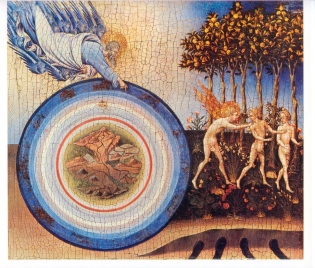The Network is, we are told, a landscape operating under an economy of abundance. Only the digital traverses the pathways of the Network, and the digital is infinitely copyable without any prior authorization. Kevin Kelly has called the Network a big copy machine. The copy of the digital thing is note for note, bit for bit. It’s a perfect copy. Except for the location of the bits and the timestamp, there’s no discernable difference between this copy and that one. The Network fills itself with some number of copies commensurate with the sum total of human desire for that thing.
One imagines that if you follow the path of timestamps back far enough, you’d find the earliest copy. The copy that is the origin of all subsequent copies. We might call this the master copy, and attribute some sense of originality to it. Yet, it has no practical difference from any of the copies that follow. Imperfect copies are unplayable, and are eventually deleted.
The economy of abundance is based on a modulation of the model of industrial production. The assembly line in a factory produces thousands upon thousands of new widgets with improved features at a lower cost. Everyone can now afford a widget. Once the floppy and compact disk became obsolete, the multiplication of digital product approached zero cost. The production of the next copy, within the context of the Network’s infrastructure, requires no skilled labor and hardly any capital. (This difference is at the heart of the economic turmoil in journalism and other print media. Newsprint is no longer the cheapest target medium for news writing.)
In the midst of this sea of abundant copies I began to wonder what escaped the capture of the copy. It was while reading an article by Alex Ross in The New Yorker on the composer Georg Friederich Haas that some of the missing pieces began to fall in to place. The article, called Darkness Audible, describes a performance of Haas’s music:
A September performance of Haas’s “In iij Noct.�? by the JACK Quartet—a youthful group that routinely fills halls for performances of Haas’ Third String Quartet—took place in a blacked-out theatre. The effect was akin to bats using echolocation to navigate a lightless cave, sending out “invitations,�? whereby the players sitting at opposite ends of the room signalled one another that they were ready to proceed from one passage to the next.
As in a number of contemporary musical compositions, the duration of some of Haas’s music is variable. The score contains a set of instructions, a recipe, but not a tick-by-tick requirement for their unfolding. In a footnote to his article on Haas, Ross relates a discussion with violinist, Ari Striesfelf, about performing the work:
We’ve played the piece seven times, with three more performances scheduled in January, at New Music New College in Sarasota, Florida. The first time we played it was in March, 2008, in Chicago, at a venue called the Renaissance Society, a contemporary art gallery at the University of Chicago. Nobody that I know of has had an adverse reaction to the piece or to the darkness. Most people are completely enthralled by the experience and don’t even realize that an hour or more has passed. Haas states that the performance needs to be at least thirty-five minutes but that it can be much longer. He was rather surprised that our performance went on for as long as it did! But the length was never something we discussed. It was merely the time we needed to fully realize his musical material.
The music coupled with the darkness has this incredible ability to make you completely lose track of time. We don’t even realize how much time has gone by. Our longest performance was eighty minutes, in Pasadena, and when we had finished I felt we had only begun to realize the possibilities embedded within the musical parameters. Every performance seems to invite new ideas and possibilities. In the performance you heard of ours back in September there were some moments that I couldn’t believe what we had accomplished. Moments where we were passing material around the ensemble in such a fluid fashion you would think we had planned it out, but it was totally improvised in the moment. The more we perform the piece, the more in tune with each other’s minds we become.
When we return to the question: what’s the thing that’s missing from the copy, we find that in the music of Georg Friederich Haas, almost everything is missing. The performance, by design, cannot be copied in the sense that the Network understands a copy. Its variation is part of its essence. A note for note recording misses the point.
So, while the Network can abundantly fill up with copies of a snapshot of a particular performance of Haas’s work, it misses the work entirely. The work, in its fullness, unfolds in front of an audience and disappears into memory just as quickly as each note sounds. Imagine in this day and age, a work that slips through the net of the digital. A new instance of the work requires a new performance by an ensemble of highly skilled artists. Without this assembly of artists, the work remains silent.
Tomorrow I’ll be attending a performance of Charpentier’s Midnight Mass by Magnificat Baroque in an old church in San Francisco. While variation isn’t built in to the structure of the piece, all performance exists to showcase variation. How will this piece sound, in this old church with these particular musicians on a Sunday afternoon? Even if I were to record the concert from my seat and release it to the Network, those bits would barely scratch the surface of the experience.
Comments closed



